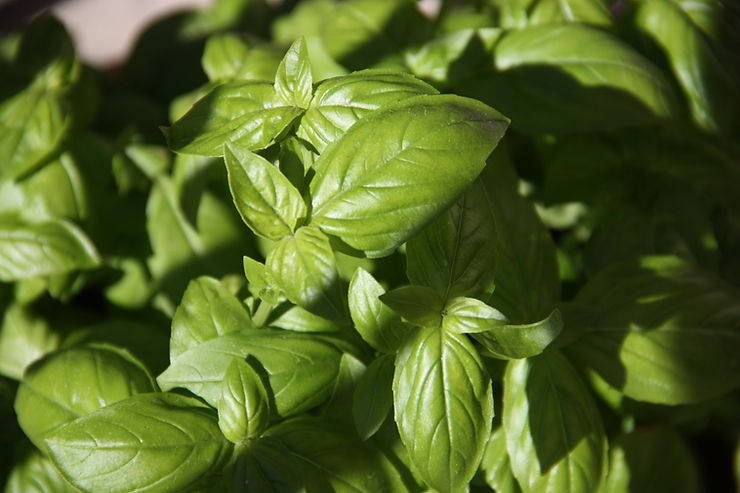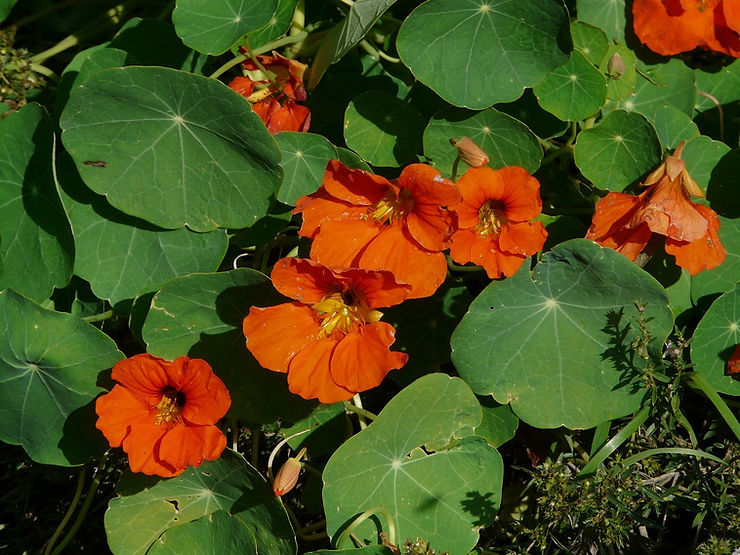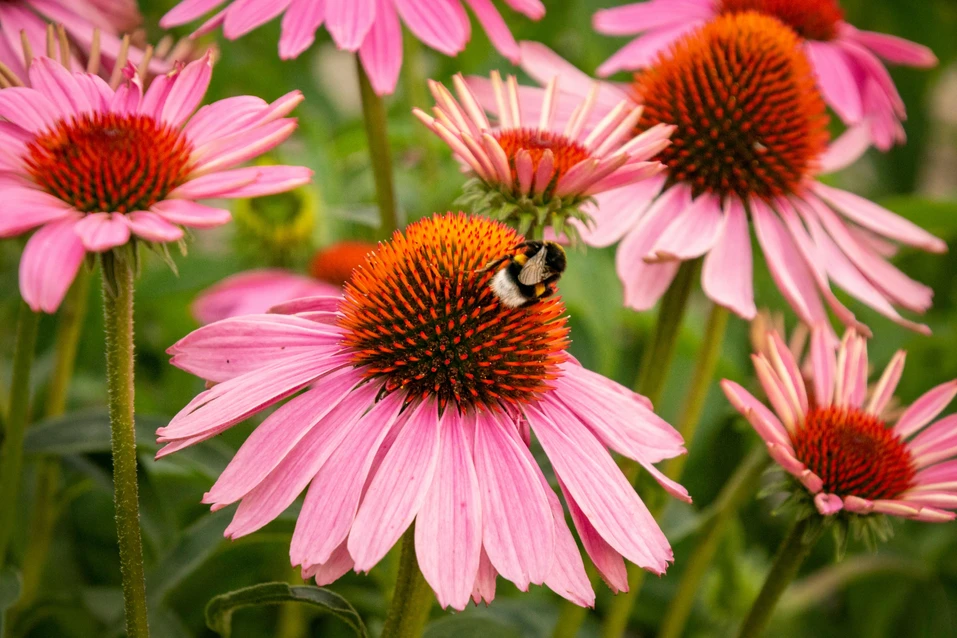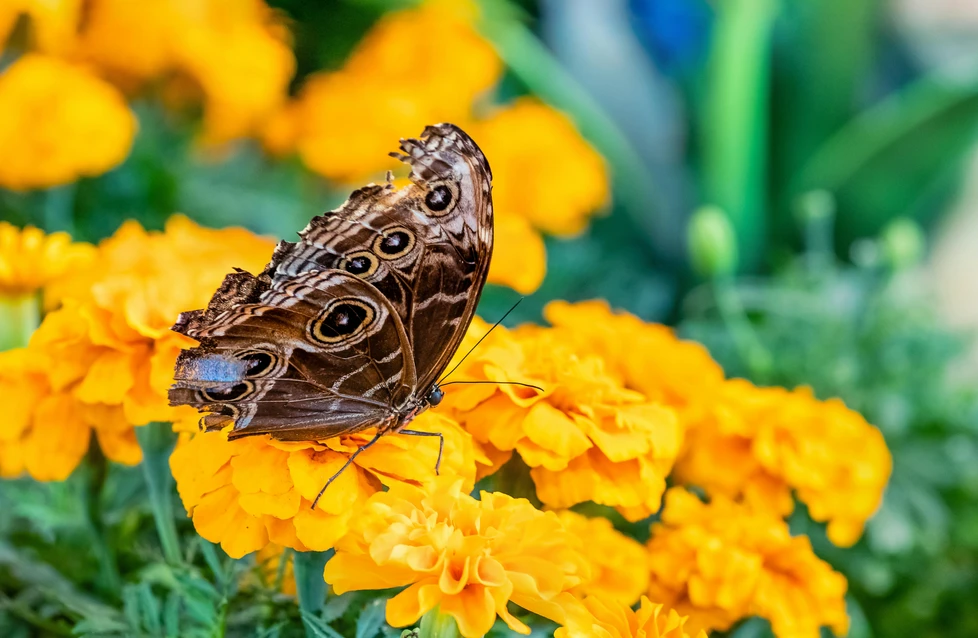What is a Sensory Garden?
Any outdoor space can enhance your senses. However, a sensory garden is intentionally designed to stimulate and engage all your senses; sight, touch, sound, smell, and taste. This type of garden taps into the principles of mindfulness by connecting you to nature and helps you become aware of the surrounding environment.

“Some of the links within this post are affiliate links on which I receive a small compensation from the sale of certain items with no extra cost to you.”
“As an Amazon Associate I earn from qualifying purchases.”
Benefits of a Sensory Garden-Stimulate All Five Senses
A sensory garden enhances social and communication skills, improves physical and mental health, engages people with disabilities, helps kids learn about nature and supports seniors. These gardens also encourage the use of native plants and pollinator-friendly landscaping in addition to eliminating the use of pesticides.
For more information on the benefits of a sensory garden, click creating and engaging a sensory garden.
Why Create a Sensory Garden? Why Not!
Gardens add another dimension to your yard. They add beauty with an array of colors and create habitats for wildlife. We can all do our part to enhance our planet by creating a garden.
But why a sensory garden? Sensory gardens add a totally new dimension to your home. They entice you and your guests to observe things at close range, to take in the aromas wafting through your yard, and actively touch all the different textures of plants, bushes, and insects. You begin to wrap your mind around nature through experiencing your garden using all your senses.
Creating a Sensory Garden: Selecting Plants and Other Accessories to Stimulate Our Five Senses
Before selecting plants and accessories, think about how you will address each sense.
Choose various trees, shrubs, bushes, and grasses that invigorate and revitalize your senses and that are native to your climate (growing zone). Also, consider hardscaping features that will intrigue your senses.
Below is a selection of plants and accessories that will energize you and explanations of how to incorporate them into your sensory garden.
Sight
To create a visually pleasing garden, add plants with contrasting shapes, hues, forms, and textures. As a rule of thumb cool colors such as purples, blues, and pinks, calm the senses. Whereas, warm tones such as yellows, oranges, and reds excite them.

Flowers like zinnias, marigolds, sunflowers and coneflowers add a variety of color and texture to the garden. They also encourage butterflies and other pollinators to visit your garden. Bee balm and coral honeysuckle will definitely attract pollinators you may wish to observe.
Pink muhly grass that is featured in the picture above adds a bit of a whimsy to your garden when there is a gentle breeze.
Bushes that attract pollinators such as butterfly bush, lilac bushes, and perennial hibiscus are also pleasing to the eye
Weeping willow trees, magnolia trees, and crepe myrtle (tall variety) all add interest to a garden. They have different textured bark and deep colors that attract the eye.
Sound
The sounds of birds singing, running water, crickets chirping in the evening, croaking frogs, wispy sounds of tall grasses or pine needles rustling through the wind all add to our sense of sound.

Water features with gurgling sounds and wind chimes added to the garden also stimulate our auditory system.

Chopped shells, tiny stones, or gravel used as a pathway add a nice crunching sound to a garden. The rustling of fallen leaves and pine cones add seasonal sounds.
Hanging bottles from a pergola add a pleasing sound during a soft breeze.
Adding bird houses (DIY Gourd House) and bird feeders to your yard will encourage songbirds to visit and perhaps stay. Birdhouses also add a visual effect to your garden and an opportunity for a learning experience for young children.

Bamboo delivers a nice hollow sound when pushed in a breeze. However, bamboo is very invasive. Root pruning is a good method to keep it under control. Click here for more information on how to control the spread of bamboo.
Smell
The sense of smell can be very commanding and trigger memories of days gone by. Freshly baked bread or a turkey roasting at Thanksgiving can conjure up pleasant scenes of long ago.
That’s why it is imperative to integrate smells into your garden, especially one created for people with dementia. Familiar fragrances may trigger memories that reconnect them to loved ones.
Old fashioned flowers that bring back memories include roses (try David Austin varieties which are very easy to grow and maintain), honeysuckle, English lavender, peppermint, gardenias, hyacinths, and freesias.

Beyond triggering memories, our olfactory sense is heightened by the sweet smell of lilac bushes, heliotrope, sweet pea, mock orange shrub and angel’s trumpet.
Herbs such as sweet basil, peppermint, and rosemary have a wonderful aroma when you rub your fingers down the stalk or leaf, stimulating the olfactory, tactile and gustatory (taste) senses.

Wood shavings, a cluster of autumn leaves, mulch, and cut grass will all add to the experience.
Touch
The sense of touch or tactile sensation is crucial in a sensory garden, especially if the garden is created for children. The plants you choose should invite touch and exploration. Different textures can include soft velvety flowers, fuzzy leaves, smooth stones, prickly leaves, stems, or seed pods, rough bark and springy moss.

Consider adding lamb’s ear, cacti (without the fine prickly needles), various grasses and American pussywillow to your garden. Rough and peeling bark like that found on crepe myrtle trees and river birch not only add a glorious sense of touch but are also attractive to the eye.

You can even add an area to create mud for children to revel in!

Taste
Edible gardens have become very popular for those who want to be self sustaining and perhaps off the grid. There are a variety of edible plants that are quite beautiful and tasty.

Nasturtium flowers
Fruit bearing trees, herbs, vegetables and edible flowers such as pansies and nasturtiums are beautiful and easy to grow in a sensory garden. Be careful when combining specific herbs and vegetables because some are not good companions. For more information on which plants to pair together, click Planting Herbs in a Garden.
Blueberry bushes, wild strawberries, and violets are great additions to a sensory garden intended to stimulate the sense of taste.
Take caution when selecting plants to taste. You want to avoid hot, spicy plants, and toxic plants such as foxglove and poison ivy. Elderberry is also toxic when eaten raw. Refer to Poison Control when selecting plants.
Appropriate For All Backyards
Creating a sensory paradise is appropriate for all yards from the largest of landscapes to a small balcony.
Large Landscape
If you have a large area, create smaller, secluded pockets using trellises, pergolas, seating areas or rows of trees or bushes. Create defined living spaces with patios made of slate or use groundcover that can be walked on without destroying the plant. Some groundcovers when stepped on give off a pleasant aroma. Some ideas for groundcover in the defined areas are:
- sedum varieties: Dragon’s Blood, Tricolor, or Blue Spruce/full sun to part shade/drought tolerant/zones 3-10
- ajuga/bugleweed: full to part shade/slowly spreads through the garden/zones 4-10
- portulaca: drought tolerant/full sun/zones 10, 11
- Scotch moss: full sun to part shade/zones 4-8
- soapwort: drought and deer tolerant/full sun to part shade/zones 3-9
- mazus: full sun to part shade/zones 5-8
- creeping Jenny: full sun to part shade/zones 3-9/best used between stepping stones
Create winding pathways connecting the spots using crushed shell. It will encourage people to stop and explore as they follow the path from one place to another.
Small Landscape
If you have a smaller area, consider ways to go vertical using trellises, gutter guards, tiered carts or living walls.
If you need more ideas on how to decorate a balcony, click here.
Creating a Sensory Garden: The Ultimate Guide to Selecting the Perfect Plants
Before creating a sensory garden remember to think about how you will address each sense. Choose from some of the plants and accessories listed in this post. If you have no idea where to begin, contact me and I will help you create a sensory garden within your specific parameters. Click the SERVICE page for more information on my consulting services.
I hope you enjoyed this post. Please share it with friends and family and leave a comment below. I’d love to hear your thoughts.
Happy Gardening,
Nina
bestgardeningforbeginners@gmail.com



